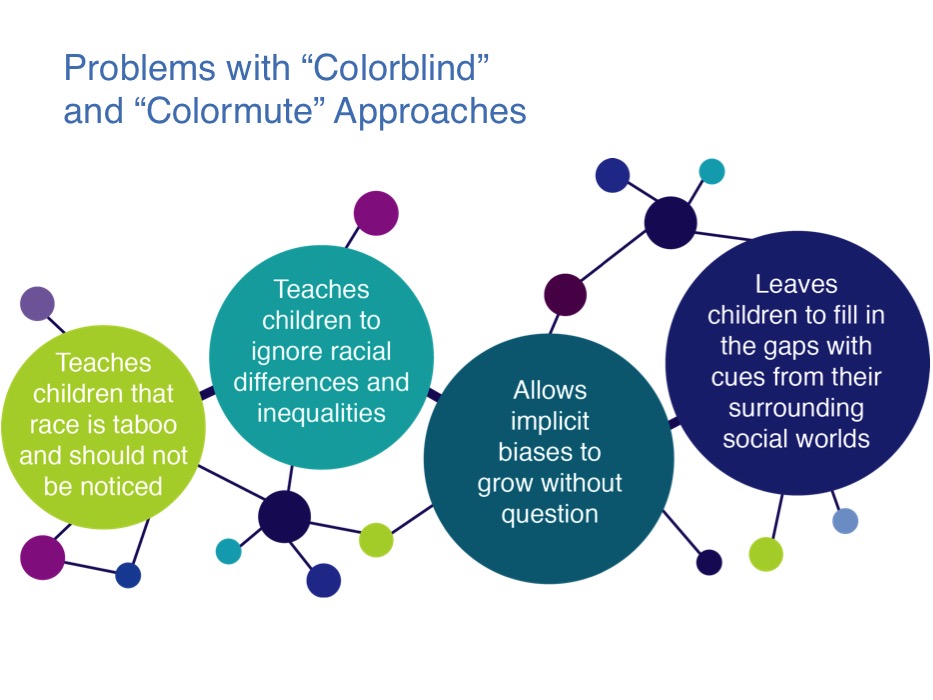Being silent with your child about race is not a solution, because racial silence still communicates volumes. We are communicating when we hush the child who asks about skin color. Or when we simply repeat the adage that “everyone is the same and we don’t see color” but don’t embody racial equity in other ways. Through the silence we are teaching children that race is taboo and we should not notice it. This is what researchers call “colorblind” or “colormute.” A colorblind and colormute approach actually teaches kids not to notice racial inequalities. In the silence, implicit biases can grow unquestioned. Kids will fill in the missing gaps with cues from other sources such as the media or dominant peers. For example, children often notice if most of the kids with brown-skin receive “red cards” for bad behavior in class or are more often the kids that get expelled from school. We want her to notice and to ask “why” so she can explore what is happening. If we silence this dawning awareness, our children may draw the conclusion that only children with brown-skin are “bad” and get into trouble. You can read discussion about this issue by clicking on the “Check It Out” box at the bottom of the page.

